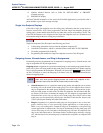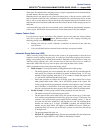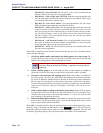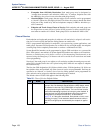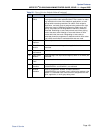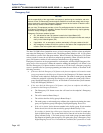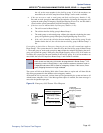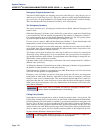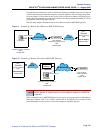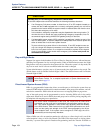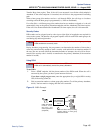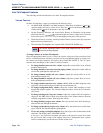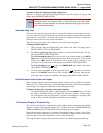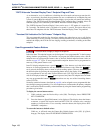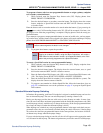
System Features
INTER-TEL
®
CS-5200/5400 ADMINISTRATOR GUIDE, ISSUE 1.1 – August 2005
Page 162 Emergency Outgoing Access Lists
Emergency Outgoing Access Lists
The Inter-Tel 5000 supports two outgoing access lists called Emergency Day Outgoing Access
and Emergency Night Outgoing Access. These lists, which are similar to the Day/Night Outgo-
ing Access lists, are programmable for CO Trunk Groups and Node IP Connection Groups.
These lists default to the Auto Extension List PP051: Auto: All Endpoints.
Ten Emergency Numbers
The system can store up to 10 emergency numbers that are dialed when the Emergency Call
feature is used.
When the Emergency Call feature code is dialed, the system selects a trunk from Trunk Group
1 and automatically dials the number programmed in the database as Emergency Number 1.
For systems operating in the US, the default Emergency Number 1 is 911. For systems operat-
ing in the European market, the default Emergency Number 1 is 999.
If a user accesses a trunk or ARS and dials Emergency Numbers 1–10, the dialed number will
automatically override all toll restrictions and trunk access programming.
If the system is installed in an area where emergency responder services such as 911or 999 are
not available, Inter-Tel recommends substituting the phone number for the local police or fire
department or the telephone company operator.
This feature can be made inoperative by removing all trunk access and/or by removing the
dialed digit string. If Emergency Call is not operational, the system presents a warning mes-
sage that the feature has been disabled. The programmer must acknowledge or change this con-
dition before system operation can continue.
Like other feature codes, the Emergency Call feature code can be changed from 911 or 999 to a
different code, if necessary.
An Emergency Number is blocked when no trunks or Emergency Numbers are programmed in
the database or when all trunks in a trunk group are busy.
If the Emergency Call feature is programmed to use ARS, Route Group 1 for local calls will be
used even if its dial patterns are reprogrammed.
Emergency calls, by default, use the first local trunk group and will not be sent using node
trunk groups on other nodes. However, when ARS is used to place an emergency call, Route
Group 1 is used even if it contains nodes. This means that the network can access a trunk on a
node other than the user’s node if the user accesses ARS and dials the Emergency Number.
When a user places an emergency call, every Administrator in the network receives the emer-
gency alarm, Alarm #11.
Calling Party Number
Each endpoint can be programmed to send an identifying number when a call is placed. The
Calling Party Number field is located in Devices and Feature Codes/Endpoints/Individual End-
point programming. This information is required by government regulation for emergency calls
in areas. Up to 48 digits can be programmed in the Calling Party Number field. However,
check with your service provider to determine their specific requirements for this field. This
number will be sent in the ISDN setup message in the Calling Party Number Information Ele-
ment. In addition, the system will also send the extension number of the endpoint in the Call-
ing Party Number Subaddress Information Element.
IMPORTANT
Local trunks must be installed and used for Emergency Number trunk
access. Nodes should not be used in Route Group 1.
NOTE
No default number exists for this field. It is up to the programmer to supply the
correct Emergency Calling Party Number for each endpoint.



